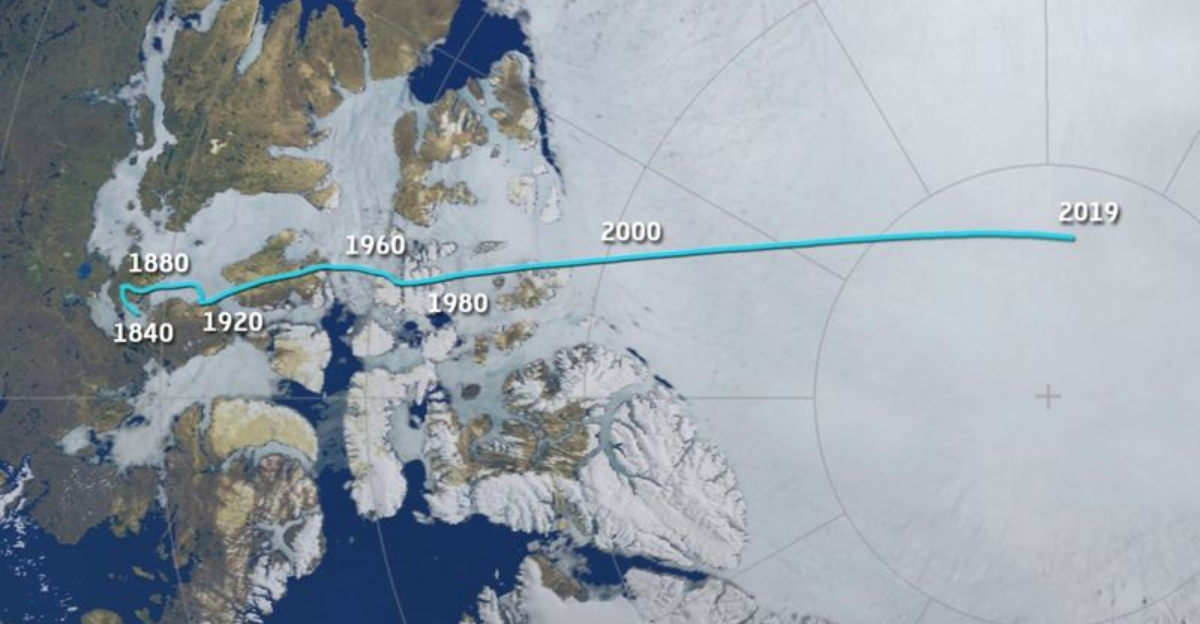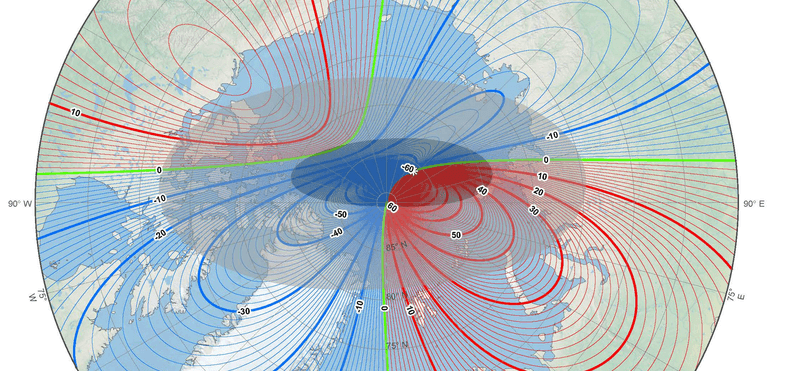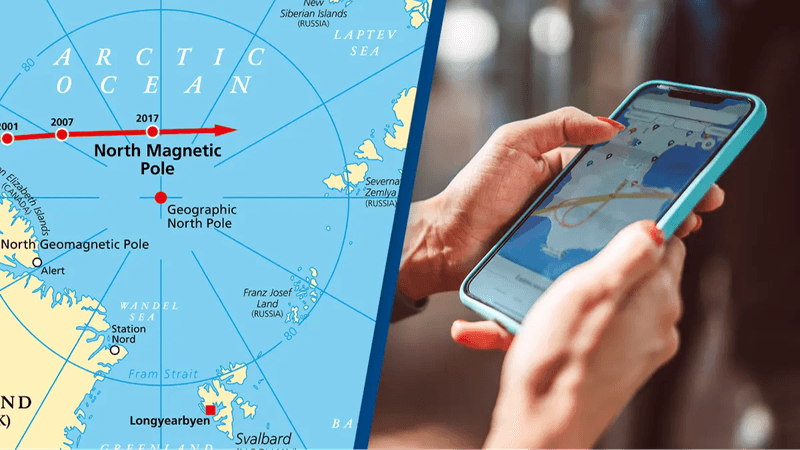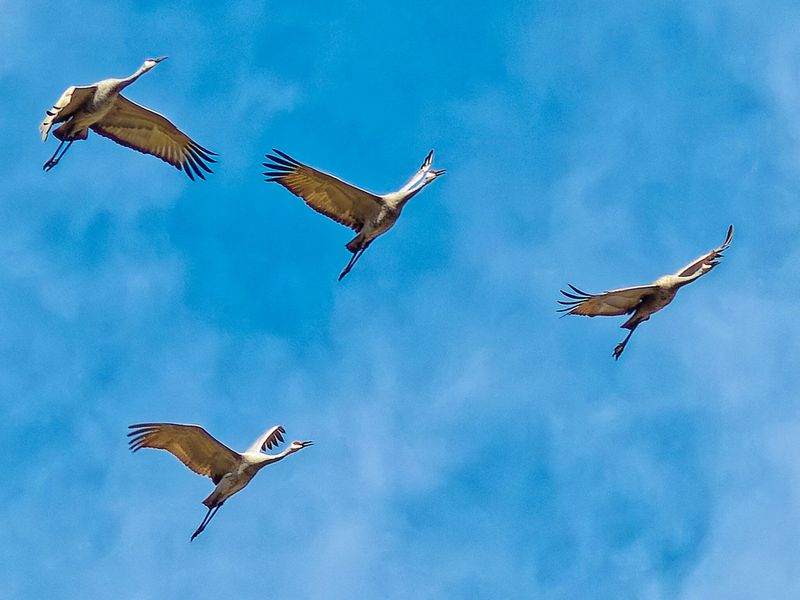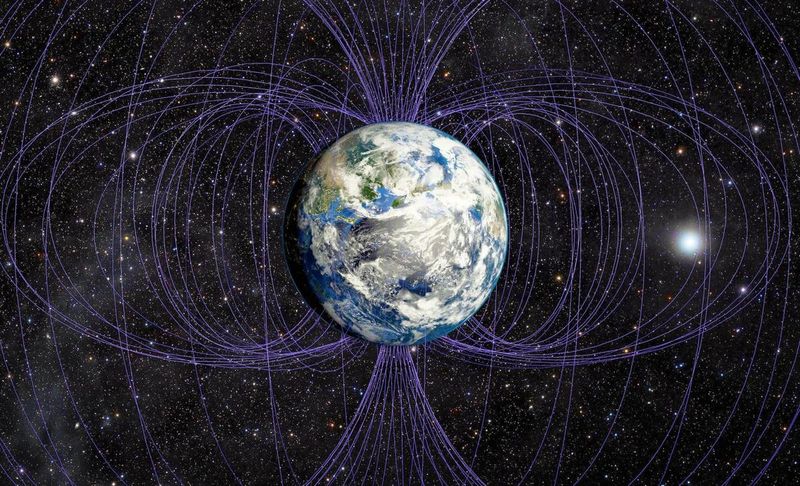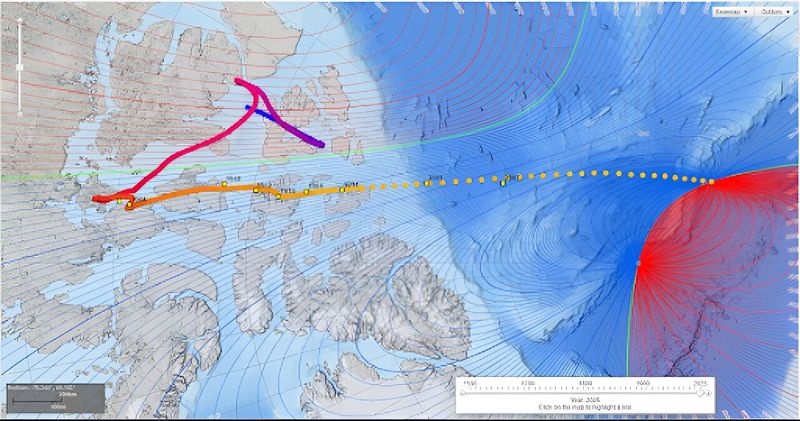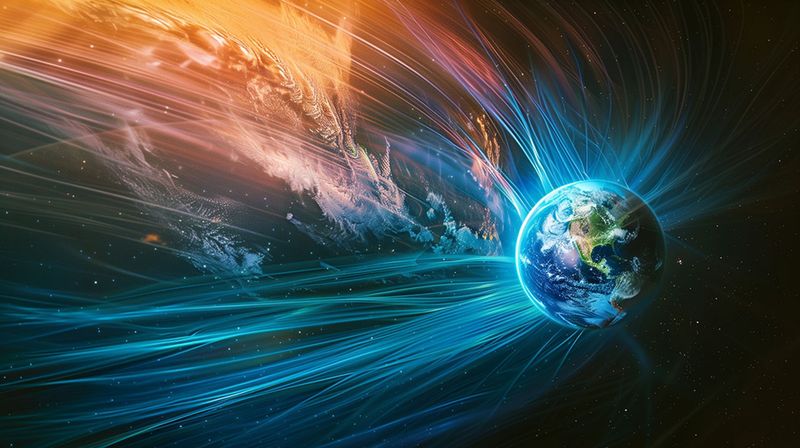The Earth’s magnetic north pole is in constant motion, shifting across the Arctic region. This movement has implications for navigation systems, wildlife migration, and even climate patterns.
Join us as we explore the fascinating journey of the magnetic north pole, its new location, and what this means for our planet.
The Magnetic North’s New Journey
The Earth’s magnetic north pole, unlike the geographic north, doesn’t stay in one place. Recent studies show it’s moving swiftly from the Canadian Arctic towards Siberia. This shift, noticeable over the past few decades, intrigues scientists and navigators alike.
The movement is primarily driven by changes in the Earth’s molten outer core. This dynamic flow of iron generates our planet’s magnetic field.
Understanding this journey helps us comprehend not just navigation but also broader geophysical processes. As the pole moves, it affects how we navigate and understand Earth’s magnetic environment.
Impact on Navigation
The movement of the magnetic north pole significantly impacts navigation. Modern navigation systems, including those in ships and aircraft, rely on magnetic compasses. A shifting pole means these systems must be recalibrated regularly.
The World Magnetic Model, updated every five years, provides vital data for accurate navigation. As the pole moves, this model ensures that navigation remains precise.
Despite the reliance on GPS, magnetic compasses remain crucial, especially in remote areas. Understanding the magnetic north’s journey is essential for navigators to maintain accuracy in direction and travel planning.
Wildlife and Migration
Wildlife, particularly migratory birds, relies on the Earth’s magnetic field for navigation. As the magnetic north pole shifts, these animals may need to adjust their migratory routes.
Research indicates that many bird species have an internal compass that aligns with magnetic fields. Changes can disrupt these natural navigation systems, altering traditional paths.
Understanding this influence on migration patterns is crucial for wildlife conservation efforts. Scientists study these shifts to help preserve species and ensure they can adapt to changes in the Earth’s magnetic environment.
Effects on Climate Studies
The shifting magnetic north pole also influences climate studies. Researchers in the Arctic use magnetic data to analyze ice patterns and shifts in climate.
Changes in the magnetic field can affect satellite measurements, which are vital for climate modeling. As the pole moves, scientists must adjust their methods to ensure accurate data collection.
This adjustment is critical for understanding climate change and its impacts on the environment. By incorporating magnetic field data, researchers can improve predictions and enhance our knowledge of Earth’s climate systems.
Scientific Exploration and Understanding
The magnetic north pole’s movement spurs scientific exploration. Researchers delve into the Earth’s core dynamics to understand what drives this shift.
The Earth’s molten outer core, rich in iron, creates its magnetic field. By studying these core processes, scientists gain insights into geophysical phenomena.
This exploration enhances our understanding of Earth’s interior and its magnetic behavior. It also contributes to broader knowledge about planetary magnetism, influencing how we study other celestial bodies.
The ongoing movement of the magnetic north is a focal point for advancing geophysical research.
Technological Innovations
The movement of the magnetic north pole inspires technological innovation. Engineers are developing new navigation tools to adapt to these changes.
Advanced compasses and navigation systems incorporate real-time data to maintain accuracy. These innovations are crucial for industries reliant on precise navigation, such as aviation and maritime sectors.
By harnessing technology, we can better adapt to Earth’s dynamic magnetic field. This progress not only aids navigation but also opens up new possibilities in exploration and travel, ensuring safety and efficiency in various fields.
Historical Perspective
Historically, sailors have relied on the magnetic north for navigation. Early compasses, though primitive, were essential tools for explorers.
The movement of the magnetic pole is not a new phenomenon. Historical records show shifts that challenged navigators of the past.
Understanding these historical shifts provides context for today’s changes. By studying past adaptations, we can better prepare for future navigation challenges. The magnetic north’s journey is a testament to the resilience and innovation of explorers throughout history.
Cultural and Mythological Significance
The magnetic north pole holds cultural and mythological significance across various civilizations. Ancient cultures often linked it to mystical beliefs and legends.
For some, it was a guiding star, a symbol of direction and destiny. Mythical creatures and stories often marked maps, highlighting its enigmatic nature.
This cultural richness adds depth to our understanding of the magnetic north’s role in human history. Exploring these myths and legends provides insights into how ancient peoples interpreted the natural world’s mysteries and the magnetic north’s allure.
Future Implications
The ongoing movement of the magnetic north pole has future implications. Urban planners and technologists must consider these changes in infrastructure and navigation.
Innovations in navigation technology will continue to evolve. Future cities may integrate these systems into daily life, enhancing efficiency and connectivity.
Understanding the magnetic north’s trajectory allows us to anticipate and adapt to changes. By embracing this dynamic aspect of our planet, we can build resilient and adaptable systems for the future, ensuring seamless navigation and exploration across the globe.
